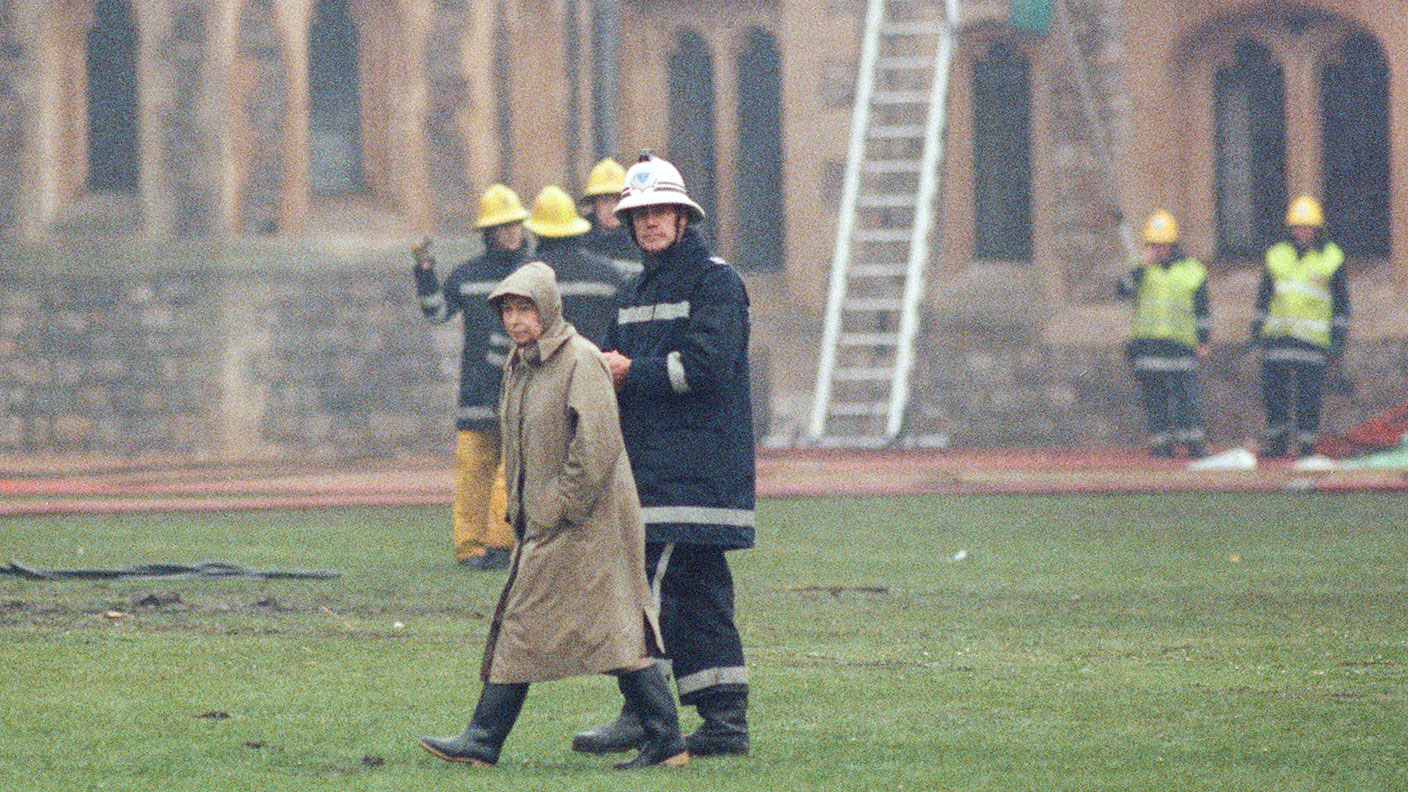26 November 1992: The Queen volunteers to pay income tax
With Britain in recession and Windsor Castle having recently caught fire, the Queen's request to pay income tax was accepted by Parliament, on this day in 1992.


The dawning of the 1990s brought with it the first contractions in the British economy. With money tight, people started to look around for ways to cut down on state spending. It was only a matter of time before the Queen fell under their gaze.
In 1992, Her Majesty informed the prime minister, John Major, that she wished to make a few tweaks to her tax affairs. She wanted to been seen to be paying income tax just like anybody else. The matter took on a greater urgency later that year, when Windsor Castle, one of her favourite royal residences, caught fire. It wasn't going to be cheap to repair.
It wasn't too surprising, then, that just under a week after the blaze, on 26 November, Parliament happily agreed to the new arrangements, which took effect the following April. In addition, only the Queen, the Duke of Edinburgh and the Queen Mother would receive funds from the public purse from now on.
MoneyWeek
Subscribe to MoneyWeek today and get your first six magazine issues absolutely FREE

Sign up to Money Morning
Don't miss the latest investment and personal finances news, market analysis, plus money-saving tips with our free twice-daily newsletter
Don't miss the latest investment and personal finances news, market analysis, plus money-saving tips with our free twice-daily newsletter
Back then, as now, the Queen received income from three main sources. There was the Civil List, a state grant these days called the Sovereign Grant, which amounts to 15% of the profits from the Crown Estate, and which covers official expenditure. The Sovereign Grant was £49.4m in 2019-20, with an extra £33m to go on "re-servicing" Buckingham Palace.
Then there are her own private investments, which are just that – private, so never you mind. And lastly, the Duchy of Lancaster, which makes up the bulk of the Privy Purse. The modern Duchy of Lancaster was created way back in 1399 as a way to provide the English monarch with a few bob. It is run for the Queen, but not by the Queen, and it is essentially the mother of all property portfolios. Comprising around 18,433 hectares in England and Wales, the portfolio also includes office, retail and industrial properties, with a combined value in the region of £538m. And of course, there's Windsor and nine other castles. For the year to March 2020, the Duchy of Lancaster raked in £23m, a 7% increase on the previous year. It is on these revenues that the Queen pays income tax. Exactly how much isn't disclosed.
Get the latest financial news, insights and expert analysis from our award-winning MoneyWeek team, to help you understand what really matters when it comes to your finances.

-
 Boost for over 100,000 families on Child Benefit as new HMRC payment system rolled out
Boost for over 100,000 families on Child Benefit as new HMRC payment system rolled outThousands of households will no longer have to pay the dreaded High Income Child Benefit Charge through self-assessment
-
 Are you being haunted by the ghost of Christmas past? How festive cutbacks could boost your long-term wealth
Are you being haunted by the ghost of Christmas past? How festive cutbacks could boost your long-term wealthThe average family spends around £1,000 over the Christmas season. Here’s how much you could have gained if you had invested some of the money instead.
-
 31 August 1957: the Federation of Malaya declares independence from the UK
31 August 1957: the Federation of Malaya declares independence from the UKFeatures On this day in 1957, after ten years of preparation, the Federation of Malaya became an independent nation.
-
 13 April 1960: the first satellite navigation system is launched
13 April 1960: the first satellite navigation system is launchedFeatures On this day in 1960, Nasa sent the Transit 1B satellite into orbit to provide positioning for the US Navy’s fleet of Polaris ballistic missile submarines.
-
 9 April 1838: National Gallery opens in Trafalgar Square
9 April 1838: National Gallery opens in Trafalgar SquareFeatures On this day in 1838, William Wilkins’ new National Gallery building in Trafalgar Square opened to the public.
-
3 March 1962: British Antarctic Territory is created
Features On this day in 1962, Britain formed the British Antarctic Territory administered from the Falkland Islands.
-
10 March 2000: the dotcom bubble peaks
Features Tech mania fanned by the dawning of the internet age inflated the dotcom bubble to maximum extent, on this day in 2000.
-
9 March 1776: Adam Smith publishes 'The Wealth of Nations'
Features On this day in 1776, Adam Smith, the “father of modern economics”, published his hugely influential book The Wealth of Nations.
-
 8 March 1817: the New York Stock Exchange is formed
8 March 1817: the New York Stock Exchange is formedFeatures On this day in 1817, a group of brokers moved out of a New York coffee house to form what would become the biggest stock exchange in the world.
-
7 March 1969: Queen Elizabeth II officially opens the Victoria Line
Features On this day in 1969, Queen Elizabeth II took only her second trip on the tube to officially open the underground’s newest line – the Victoria Line.